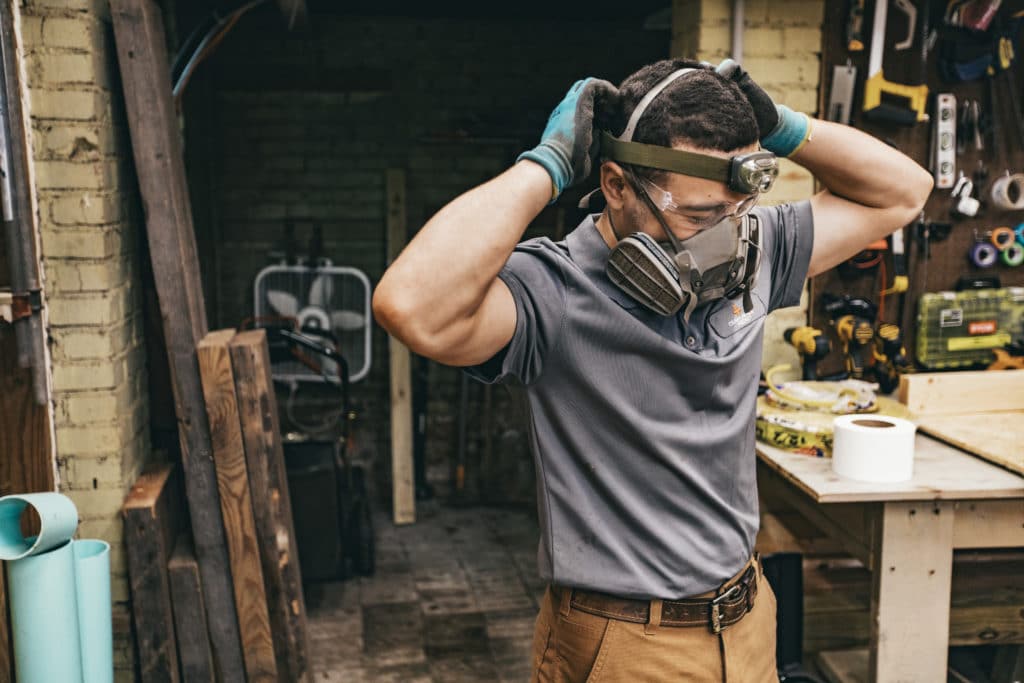There are few things that a homeowner despises more than a flooded basement. What looks to be a minor trickle or puddle is often a sign of a much larger problem, meaning you might need basement waterproofing.
Damp basements can lead to a slew of expensive and time-consuming repairs. Water in your basement may cause everything from toxic molds to structural damage. A common cause of a wet basement is misguided and clogged-up gutters. Unfortunately, the insurance company may not be able to replace all of your belongings if they get water damaged.
If you want to avoid losing your items and spending a lot of money on repairs, you will need to be proactive by waterproofing your home. But, how can you keep your basement dry and prevent moisture from getting in?
If you have a basement that is at risk of getting damp, read on to discover the benefits of waterproofing and why it’s worth your time and money.
What Causes Moisture In Basements?
To comprehend how to keep your basements dry, we must first learn what causes water to form in basements in the first place.
So let’s check out some of the most common sources of water in your basement.
Poorly Installed Soil and Drainage Systems
Rain and groundwater can seep into your basement if they can’t drain properly. One of the most common reasons for basement dampness is inadequate soil and drainage systems.
If you don’t channel the water away from the house, it will collect around the foundation and find a way inside.
Inadequate Gutters
Rain gutters are designed to divert rainfall away from your home’s foundations. Yet, they can quickly become damaged or fail to function if they’re not checked.
Water will drain into your foundation rather than away if they are incorrectly installed or too blocked to operate.
Incorrect Slope
The ground surrounding your foundation should slope away from, not towards, your house.
If the slope is incorrect, water will collect around your foundation instead of flowing away from it. Even if the slope angled slightly off, it could cause water issues in your basement.
Basement Cracks
Water can get into your basement through cracks in the floors, walls, and around doors and windows.
Water always chooses the path of least resistance, and these cracks allow water to enter with ease.
Hydrostatic Pressure
When water collects around your foundation, hydrostatic pressure develops. As gravity pulls on the water, it will strive to escape to relieve the strain.
Any fractures in your basement walls and floors can allow water to seep in. The strain can even build up to the point where cracks appear.
Condensation
Basements are infamous for being damp. Condensation can bring mildew, mold, and other issues with it, as well as possible harm.
It’s important to know that some forms of mold are toxic. So it should be imperative to rid the dampness to prevent the possibility of toxic mold.

What Is Done to Waterproof a Basement?
Let’s speak about what causes basement moisture now that we have a better knowledge of what causes it.
What is waterproofing, though, when it comes to basements?
You can carry out basement waterproofing in three ways. It can be a good idea to employ all three methods to ensure your basement is waterproofed well, but it’s not always necessary.
Interior Basement Waterproofing
Interior waterproofing is usually the simplest and most cost-effective method.
This usually begins with correctly sealing and making any gaps or cracks in your basement walls, floors, and around windows and doors watertight. Because these fissures are the most common entry point for water into our basements, correctly sealing them is the first step in keeping your basement dry.
You can use special sealants to plug any cracks and prevent new moisture from entering. These sealants are usually highly effective, and they generally come with extended warranties that ensure their performance.
Interior waterproofing techniques, such as waterproof sealants, are also effective at reducing humidity and preventing condensation. You can use these coatings to provide a waterproof barrier on basement walls and flooring.
These interior sealants are a vital part of the entire waterproofing procedure, but they don’t address the underlying issues producing the moisture. The most severe problems are usually discovered on the outside.
Exterior Basement Waterproofing
When it comes to moist basements, the source of the problem is almost always outside the house.
When it comes to waterproofing your basement, it’s crucial to look beyond the basement walls. Waterproofing on the outside is usually a considerably more extensive job than the basic sealing that you can do on the inside. When evaluating external waterproofing options, it’s a good idea to seek advice from a specialist.
Excavation of the soil surrounding the home’s foundation is usually required for exterior waterproofing. As you can expect, this is a time-consuming procedure that necessitates the use of heavy tools and machines. After all of the earth around the foundation has been removed, you can seal the outer walls.
This sealant usually has a polymer foundation and is designed to endure the life of the building. This outside waterproofing operation should ideally take place during construction.
When addressing outside approaches, it’s also necessary to mention gutter systems. Rain gutters, when placed correctly, deflect rainwater away from your home’s foundation.
On the other hand, these systems can have a reverse impact if they are not correctly installed or maintained. Water will be deposited along the base of your property if your gutters are clogged.
To keep your gutters in good operating order, keep them clear and free of debris. Ensure that your downspouts are properly installed and that water is directed far away from your home.
Correcting Drainage Systems
The root cause of dampness in your basement is frequently to do with drainage issues. If you want to keep your basement dry, you’ll need good drainage surrounding your property. The purpose of these drainage systems is to move water away from your home’s foundation, whether it’s rainwater or groundwater.
To control the water surrounding your home, there are a variety of drainage systems available. To begin, look at the dirt in the area surrounding your home. Different soil types drain in various ways. Make sure the soil around your house drains well and does not collect wet.
Because every home is different, make sure to look at how the drainage surrounding your house is working. Examine the slope of the earth around your home’s foundation. It should be sloping away from, not towards, your foundation.
It might be essential to use a sump pump to take water from the interior and pump it out, depending on your situation. These drainage systems collect water around your foundation and pump it out of your basement.
As you may expect, installing a sump pump or other type of indoor drainage system is a big job. These systems should be built to work even if the power goes off. When choosing this type of waterproofing solution, it is best to seek advice from a specialist.
A French drain is one excellent drainage solution that you could opt for.
Choose the Right Method For Your Basement
Every house is unique. As a result, the optimum waterproofing strategy for your home may differ from the method used by your neighbor. When it comes to keeping your basement clean, there are numerous variables to consider.
While every scenario is different, prevention is always preferable to repair. Taking precautions to waterproof your basement before it floods will ensure the best outcomes. Water damage can cause a slew of issues, including pricey repairs and a slew of inconveniences.
While it may be tempting to save money in the short term by ignoring the problem, putting off dealing with your basement waterproofing might result in higher costs in the long run.
Basement waterproofing options differ a lot, so do your homework to determine which method is best for your specific scenario.
And let’s not forget about the real threat of general flooding in America now with climate change. According to CNBC, every home has a flood-risk score, and many are much higher than you would think!
Your home is your most valuable asset. It is critical to take the required precautions to safeguard it. Don’t put off dealing with a problem until you have one. Taking precautions can keep your basement dry and your bank account full.
Does Waterproofing a Basement Add Value? Here
If your basement is leaking, waterproofing will increase its value, especially if it’s producing mold and mildew odors, decaying timber, or floor damage! In that instance, it’s technically destroying your home, so it’s an issue of ultimately safeguarding the asset.
If you leave it, the home’s health and structure will suffer severe depreciation.
Let Professionals Waterproof Your Basement
Many folks advise basement waterproofing once you’ve moved in. Not only will waterproofing keep your stuff dry, but it will also aid in avoiding mold and foundation problems.
There are various options for keeping water out of your basement. Be proactive about maintaining the condition of your home by calling in professional assistance.
So if you’d like to get your basement waterproof, why not get in touch with our trusted and professional team?

